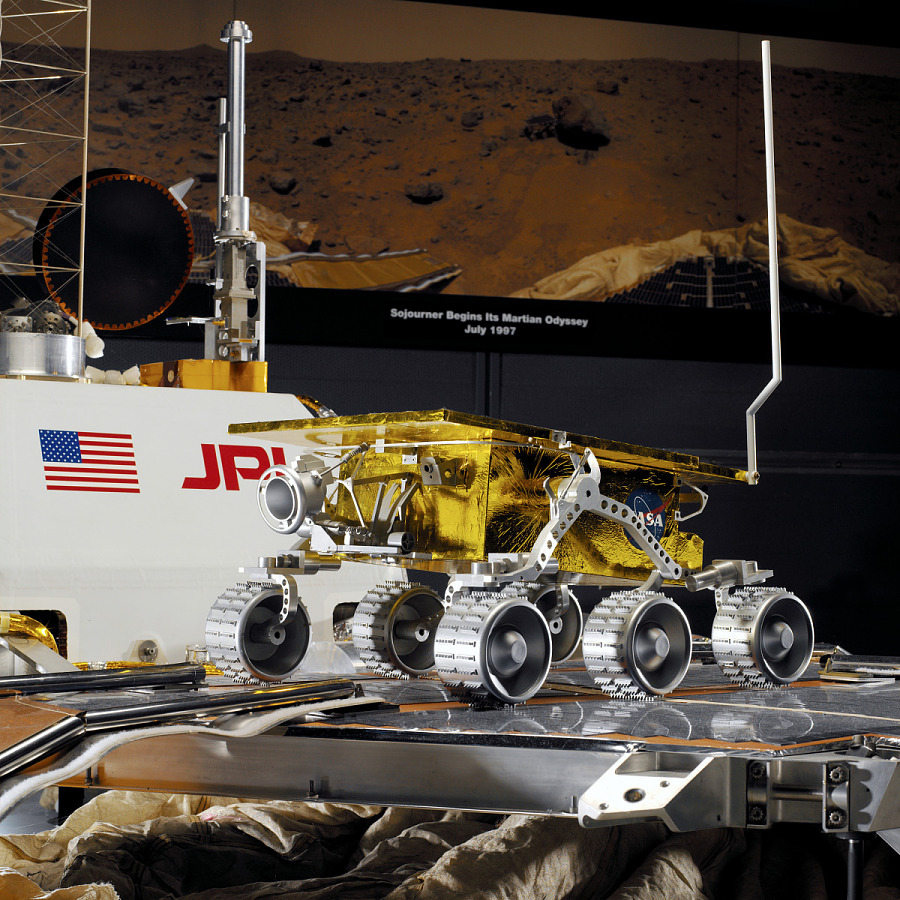Lesson 35 Space odyssey太空探索
First listen and then answer the following question: When will it be possible for us to think seriously about colonising Mars?
The Moon is likely to become the industrial hub of the Solar System, supplying the rocket fuels for its ships, easily obtainable from the lunar rocks in the form of liquid oxygen.
The reason lies in its gravity. Because the Moon has only an eightieth of the Earth's mass, it requires 97 per cent less energy to travel the quarter of a million miles from the Moon to Earth-orbit than the 200 mile-journey from Earth's surface into orbit!
This may sound fantastic, but it is easily calculated. To escape from the Earth in a rocket, one must travel at seven miles per second.
The comparable speed from the Moon is only 1.5 miles per second. Because the gravity on the Moon's surface is only a sixth of Earth's (remember how easily the Apollo astronauts bounded along), it takes much less energy to accelerate to that 1.5 miles per second than it does on Earth. Moon-dwellers will be able to fly in space at only three per cent of the cost of similar journeys by their terrestrial dwellers will be able to fly in space at only three per cent of the cost of similar journeys by their terrestrial cousins.
Arthur C. Clark once suggested a revolutionary idea passes through three phases:
1 'It's impossible -- don't waste my time.'
2 'It's possible, but not worth doing.'
3 'I said it was a good idea all along.'
2 “可能,但不值得做。”
3 “我一直说这是个好想法。”
The idea of colonising Mars -- a world 160 times more distant time the Moon -- will move decisively from the second phase to the third, when a significant number of people are living permanently in space. Mars has an extraordinary fascination for would-be voyagers. America, Russia and Europe are filled with enthusiasts -- many of them serious and senior scientists -- who dream of sending people to it. Their aim is understandable. It is the one world in the Solar System that is most like the Earth. It is a world of red sandy deserts (hence its name -- the Red Planet), cloudless skies, savage sandstorms, chasms wider than the Grand Canyon and at least one mountain more than twice as tall as Everest. It seems ideal for settlement.
7 DAYS, February 19, 1989

与课文关联的单词
hub
/hʌb/n. (活动的)中心lunar
/ˈluːnə(r)/adj. 月球的Oxygen
/ˈɒksɪdʒən/n. 氧气apollo
//n. 阿波罗accelerate
//v. 加速terrestrial
//adj. 地球的permanently
/ˈpɜːmənəntli/adv. 永远地fascination
/ˌfæsɪˈneɪʃ(ə)n/n. 魅力senior
/ˈsiːniə(r)/adj. 资历深的,年长的chasm
/ˈkæzəm/n. 断层,裂口canyon
//n. 峡谷笔记更新中
如果您看到了此提示,说明本课笔记还在正在努力更新中,请持续关注,我们将尽力把课文中出现的重点知识点总结出来!畅想 更新于:2024-07-12 07:16:20
The Moon is likely to become the industrial hub of the Solar System, supplying the rocket fuels for its ships, easily obtainable from the lunar rocks in the form of liquid oxygen.
The reason lies in its gravity. Because the Moon has only an eightieth of the Earth's mass, it requires 97 per cent less energy to travel the quarter of a million miles from the Moon to Earth-orbit than the 200 mile-journey from Earth's surface into orbit!
论点 更新于:2024-07-12 07:17:10
This may sound fantastic, but it is easily calculated. To escape from the Earth in a rocket, one must travel at seven miles per second. The comparable speed from the Moon is only 1.5 miles per second. Because the gravity on the Moon's surface is only a sixth of Earth's (remember how easily the Apollo astronauts bounded along), it takes much less energy to accelerate to that 1.5 miles per second than it does on Earth. Moon-dwellers will be able to fly in space at only three per cent of the cost of similar journeys by their terrestrial dwellers will be able to fly in space at only three per cent of the cost of similar journeys by their terrestrial cousins.
结论 更新于:2024-07-12 07:18:46
The idea of colonising Mars -- a world 160 times more distant time the Moon -- will move decisively from the second phase to the third, when a significant number of people are living permanently in space. Mars has an extraordinary fascination for would-be voyagers. America, Russia and Europe are filled with enthusiasts -- many of them serious and senior scientists -- who dream of sending people to it. Their aim is understandable. It is the one world in the Solar System that is most like the Earth. It is a world of red sandy deserts (hence its name -- the Red Planet), cloudless skies, savage sandstorms, chasms wider than the Grand Canyon and at least one mountain more than twice as tall as Everest. It seems ideal for settlement.